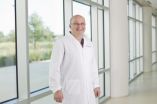(Press-News.org) King Mithridates understood that poison is only as good as the dosage taken. Each day, he ingested small quantities of poison in order to become immunize and escape his court's plotters. Oncologists run up against the same principle when fighting cancer. Sometimes, a small dose of chemotherapy may induce dangerous resistance mechanisms in malignant cells, resulting in relapse. Now, EPFL research published in the journal PLOS ONE reports a tool that could simply and accurately determine the right dose for individual patients.
Dosage, a vital issue
This novel tool, developed by Philippe Renaud's team at EPFL, is based on a very simple principle: a cell's electrical conductivity depends on the level of stress induced by chemotherapy. In broad terms, by measuring a cancerous cell's capacity to conduct electricity, researchers can assess the intensity of the treatment's effect.
"When chemotherapy induces very little stress in cells, particularly after the application of a small dose, there is a problem," says Robert Meissner, a co-author of the study. "Not only is its effect not sufficient to kill the affected cells, but this actually increases the risk of inducing resistance, which will eventually make the treatment ineffective."
This is vital during relapse as cells have already developed resistance mechanisms and sometimes oncologists don't have an effective alternative therapy. Hence, it is fundamental to apply the right dose from the start.
Step towards personalized oncology
The method developed at EPFL could help doctors make more patient-specific decisions. "We fully subscribe to the trend of personalized medicine," explains Philippe Renaud. "By making a simple biopsy, oncologists could test the way a particular patient's cells respond to different types of treatments at various doses."
The tool, which was designed for a clinical environment, provides a simple and fast analysis without affecting the treated cells. Unlike methods based on biomarkers, which kill cells and are extremely strenuous to perform, the EPFL technology could be implemented easily in a medical environment. In fact,
scientists have already tested it on malignant breast cells treated with a standard drug, doxorubicin.
The EPFL team is currently in discussion with oncologists to continue jointly developing their procedure. Within a few months, researchers say, a startup company will likely be created to help bring the laboratory work into the hospital setting.
###
Researcher Contact:
Robert Meissner, EPFL
robert.meissner@epfl.ch
+ 41 216936752 END
The right dose for oncology
2013-03-05
ELSE PRESS RELEASES FROM THIS DATE:
Pharmaceutical advertising down but not out
2013-03-05
The pharmaceutical industry has pulled back on marketing to physicians and consumers, yet some enduring patterns persist. According to a new study led by researchers at the Johns Hopkins Bloomberg School of Public Health, advertising peaked in 2004, with industry promotion to physicians declining nearly 25 percent by 2010, to $27.7 billion or 9 percent of sales. Similar declines were seen in direct-to-consumer advertising, which remains concentrated among a small number of products. The number of products promoted to providers peaked at over 3,000 in 2004, and declined ...
Accurate water vapor measurements for improved weather and climate models
2013-03-05
Humidity measurements in the atmosphere are of essential importance, since water vapour, as the most important natural greenhouse gas, has a strong influence on the Earth's atmospheric radiation balance and, thus, decisively influences our climate. In addition, water is responsible for meteorological phenomena such as the formation of clouds and precipitation. Hence, the atmospheric water content is an essential measurand in all climate models, but also when it comes to forecasting the weather; this measurand has to be determined with great accuracy if reliable predictions ...
Quality of care measures improve performance
2013-03-05
Public reporting of how physicians and hospitals perform in quality of care measures leads to improved care for patients. A collaborative team of researchers led by Geoffrey C. Lamb, M.D., professor of internal medicine at the Medical College of Wisconsin, published their findings in the March 2013 edition of Health Affairs.
The researchers analyzed 14 publicly reported quality of care measures from 2004 to 2009 for the Wisconsin Collaborative for Healthcare Quality, a voluntary consortium of physician groups, and found that physician groups in the collaborative improved ...
Prospective study finds many children with retinoblastoma can safely forego adjuvant chemotherapy
2013-03-05
In this News Digest:
Summary of a study being published online March 4, 2013 in the Journal of Clinical Oncology, reporting that in certain children with retinoblastoma, adjuvant chemotherapy can be avoided, without risking disease worsening or relapse.
The findings will help decision-making about adjuvant treatment and therapy selection for patients with low- , intermediate-, and high-risk retinoblastoma affecting only one eye
Quote for attribution to ZoAnn Eckert Dreyer, MD, American Society of Clinical Oncology Cancer Communications Committee member and pediatric ...
Brain adds cells in puberty to navigate adult world
2013-03-05
The brain adds new cells during puberty to help navigate the complex social world of adulthood, two Michigan State University neuroscientists report in the current issue of the Proceedings of the National Academy of Sciences.
Scientists used to think the brain cells you're born with are all you get. After studies revealed the birth of new brain cells in adults, conventional wisdom held that such growth was limited to two brain regions associated with memory and smell.
But in the past few years, researchers in MSU's neuroscience program have shown that mammalian brains ...
Early antiretroviral treatment reduces viral reservoirs in HIV-infected teens
2013-03-05
A study led by University of Massachusetts Medical School professor and immunologist Katherine Luzuriaga, MD, and Johns Hopkins Children's Center virologist Deborah Persaud, MD, highlights the long-term benefits of early antiretroviral therapy (ART) initiated in infants.
The study, presented on March 4 at the 20th annual Conference on Retroviruses and Opportunistic Infections (CROI) in Atlanta, shows that ART administered in early infancy can help curtail the formation of hard-to-treat viral sanctuaries — reservoirs of "sleeper" cells responsible for reigniting infection ...
Discovery of 'executioner' protein opens door to new options for stroke ALS, spinal cord injury
2013-03-05
Oxidative stress turns a protein that normally protects healthy cells into their executioner, according to a study released today in the Proceedings of the National Academy of Sciences journal.
Alvaro Estevez, an associate professor at the University of Central Florida's College of Medicine, led the multi-university team that made the discovery, which could eventually help scientists develop new therapies to combat a host of conditions from stroke to Lou Gehrig's disease
Researchers have long known that oxidative stress damages cells and results in neurodegeneration, ...
'OK' contact lenses work by flattening front of cornea, not the entire cornea...
2013-03-05
Philadelphia, Pa. (March 04, 2013) - A contact lens technique called overnight orthokeratology (OK) brings rapid improvement in vision for nearsighted patients. Now a new study shows that OK treatment works mainly by flattening the front of the cornea, reports a recent study, "Posterior Corneal Shape Changes in Myopic Overnight Orthokeratology", appearing in the March issue of Optometry and Vision Science, official journal of the American Academy of Optometry. The journal is published by Lippincott Williams & Wilkins, a part of Wolters Kluwer Health.
"This study appears ...
UCSB physicists make discovery in the quantum realm
2013-03-05
(Santa Barbara, Calif.) –– Physicists at UC Santa Barbara are manipulating light on superconducting chips, and forging new pathways to building the quantum devices of the future –– including super-fast and powerful quantum computers.
The science behind tomorrow's quantum computing and communications devices is being conducted today at UCSB in what some physicists consider to be one of the world's top laboratories in the study of quantum physics. A team in the lab of John Martinis, UCSB professor of physics, has made a discovery that provides new understanding in the quantum ...
60 percent loss of forest elephants in Africa confirmed
2013-03-05
NEW YORK (EMBARGOED UNTIL March 4, 2013, 5 PM U.S. Eastern Time) — African forest elephants are being poached out of existence. A study just published in the online journal PLOS ONE shows that across their range in central Africa, a staggering 62 percent of all forest elephants have been killed for their ivory over the past decade.
"The analysis confirms what conservationists have feared: the rapid trend towards extinction – potentially within the next decade – of the forest elephant," says Dr. Samantha Strindberg of the Wildlife Conservation Society (WCS), one of the ...


